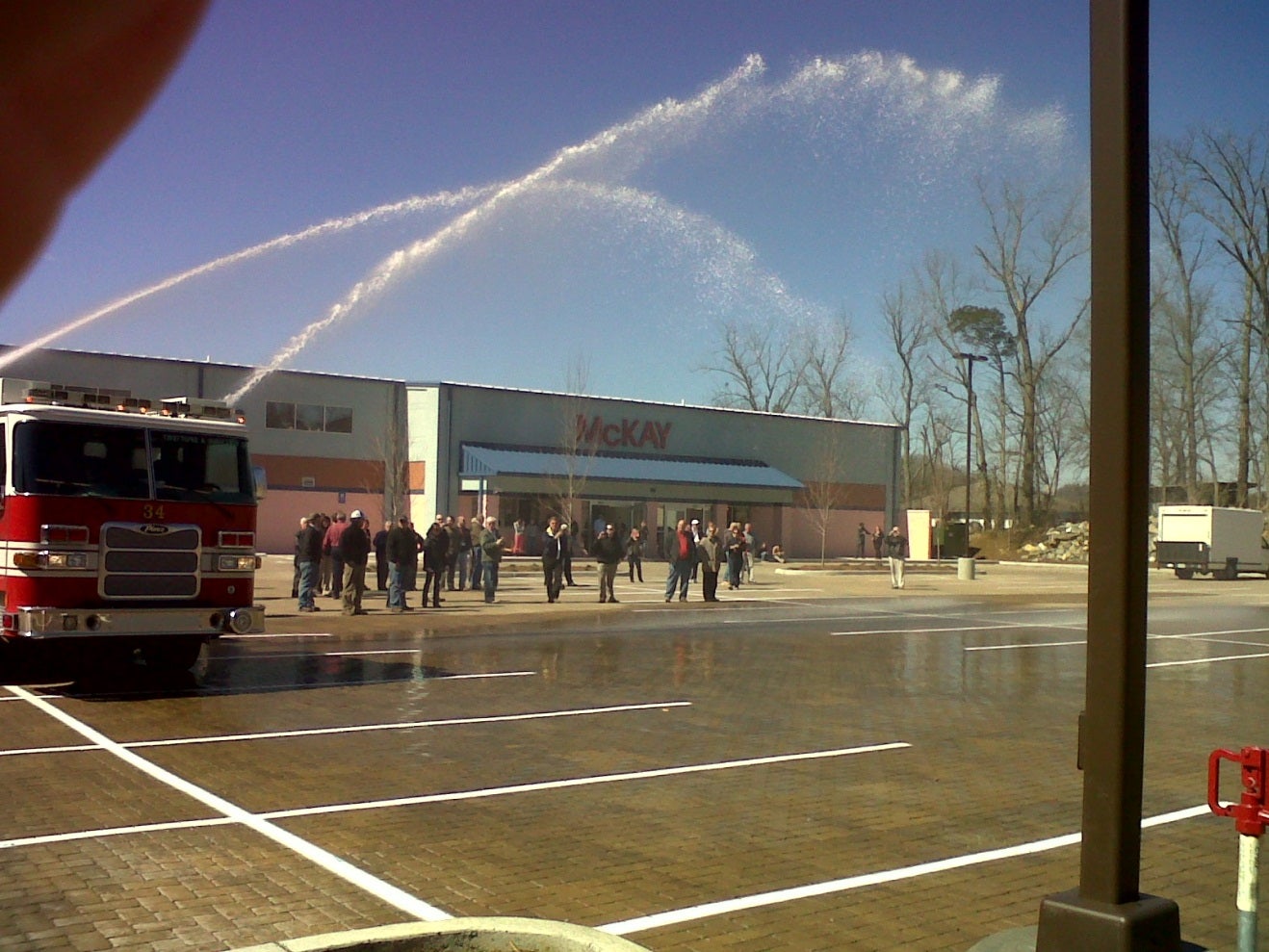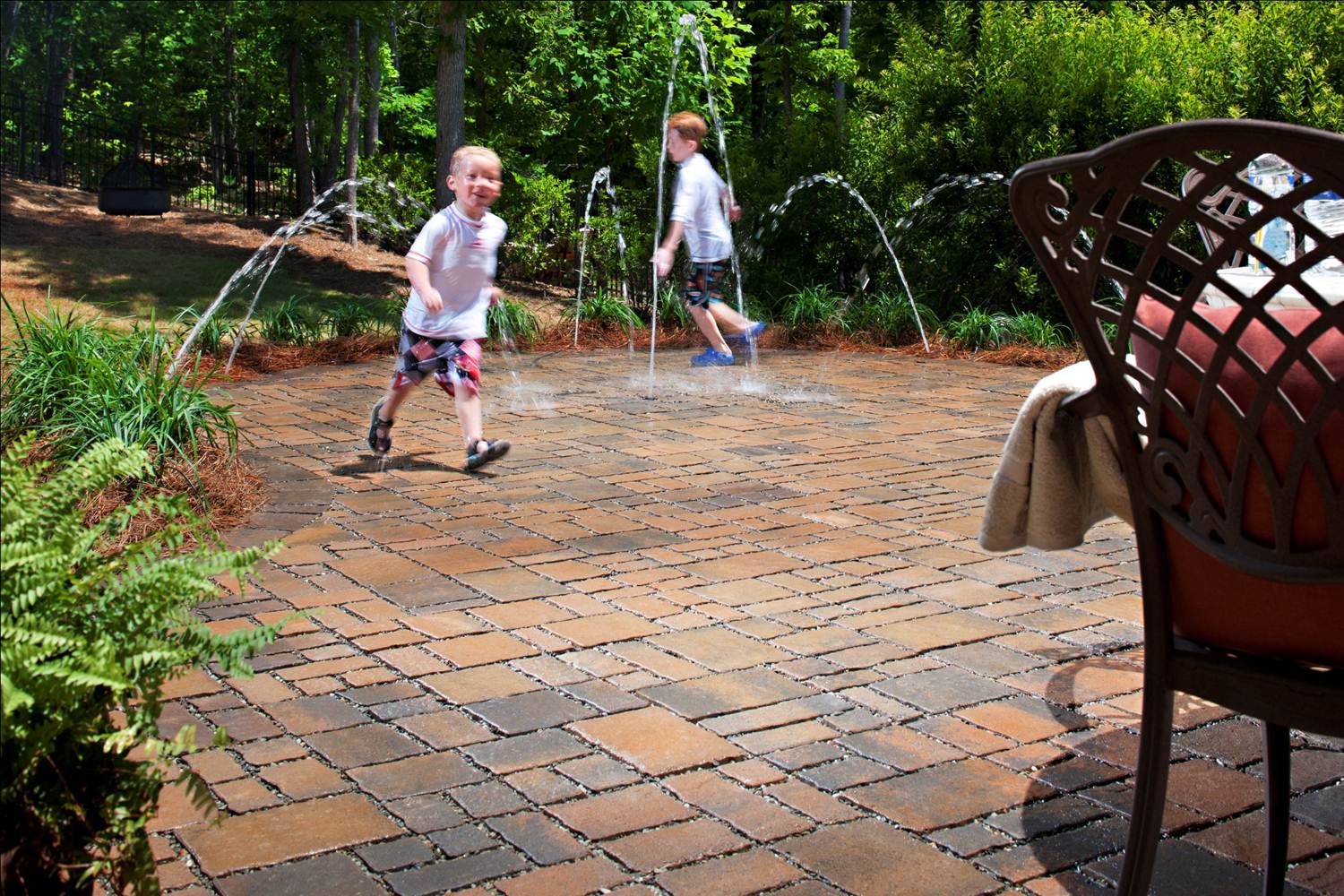 Permeable pavements answer both qualitative and quantitative needs for storm water management. As water rains on the pavement, it seeps through to the ground, reducing surface flows, often even eliminating the need for sewers and manholes.
The key to understanding permeable pavers is to perceive the pavement and the base aggregates as a system, instead of separate products. As water rains down on the pavement, it begins its journey by seeping through the pavement, and then through the base aggregates, which naturally filter the pollutants. As it travels down, the water is stored in the base, until it reaches the natural underlying soils and recharges the ground aquifers. Thus, permeable pavement serves as an underground storage basin that filters the water while allowing pedestrian and vehicular traffic on the surface.
Depending on site conditions and owner preferences, permeable pavement can be designed to obtain full, partial or zero exfiltration. Full exfiltration is the most often desired and used application, which sees all the rain water stored in the base leeching down to the underlying subgrade. When natural soils are not permeable enough, or storms too heavy, perforated pipes are added to alleviate the excess water. Thirdly, an impermeable geo-membrane can be installed above the natural soils to prevent exfiltration of contaminated flows when the pavement is installed in industrial sites.
According to the Interlocking Concrete Pavement Institute (ICPI), when choosing permeable pavement technology, the designer or owner will benefit from:
• Conservation of space on the site and reduction of impervious cover
• Reduction of runoff
• Reduced peak discharge and stress on sewers
• Reduction of downstream erosion
• Improved water quality
• Reduction of water temperature
• Increased recharge of groundwater
• Promote tree survival by providing air and water to the roots
• Reduction of total development costs
• Reduction of infrastructure construction
• Decrease in retention basins and other unsellable land
• Reduction in risk of accidents/injuries
• Elimination of puddling and flooding on parking lots
• Faster snow melt drainage
• Urban heat island reduction
• Eligibility for LEED® credits
Permeable pavements answer both qualitative and quantitative needs for storm water management. As water rains on the pavement, it seeps through to the ground, reducing surface flows, often even eliminating the need for sewers and manholes.
The key to understanding permeable pavers is to perceive the pavement and the base aggregates as a system, instead of separate products. As water rains down on the pavement, it begins its journey by seeping through the pavement, and then through the base aggregates, which naturally filter the pollutants. As it travels down, the water is stored in the base, until it reaches the natural underlying soils and recharges the ground aquifers. Thus, permeable pavement serves as an underground storage basin that filters the water while allowing pedestrian and vehicular traffic on the surface.
Depending on site conditions and owner preferences, permeable pavement can be designed to obtain full, partial or zero exfiltration. Full exfiltration is the most often desired and used application, which sees all the rain water stored in the base leeching down to the underlying subgrade. When natural soils are not permeable enough, or storms too heavy, perforated pipes are added to alleviate the excess water. Thirdly, an impermeable geo-membrane can be installed above the natural soils to prevent exfiltration of contaminated flows when the pavement is installed in industrial sites.
According to the Interlocking Concrete Pavement Institute (ICPI), when choosing permeable pavement technology, the designer or owner will benefit from:
• Conservation of space on the site and reduction of impervious cover
• Reduction of runoff
• Reduced peak discharge and stress on sewers
• Reduction of downstream erosion
• Improved water quality
• Reduction of water temperature
• Increased recharge of groundwater
• Promote tree survival by providing air and water to the roots
• Reduction of total development costs
• Reduction of infrastructure construction
• Decrease in retention basins and other unsellable land
• Reduction in risk of accidents/injuries
• Elimination of puddling and flooding on parking lots
• Faster snow melt drainage
• Urban heat island reduction
• Eligibility for LEED® credits
 To learn more about improving storm water management, click here.
To learn more about improving storm water management, click here.



